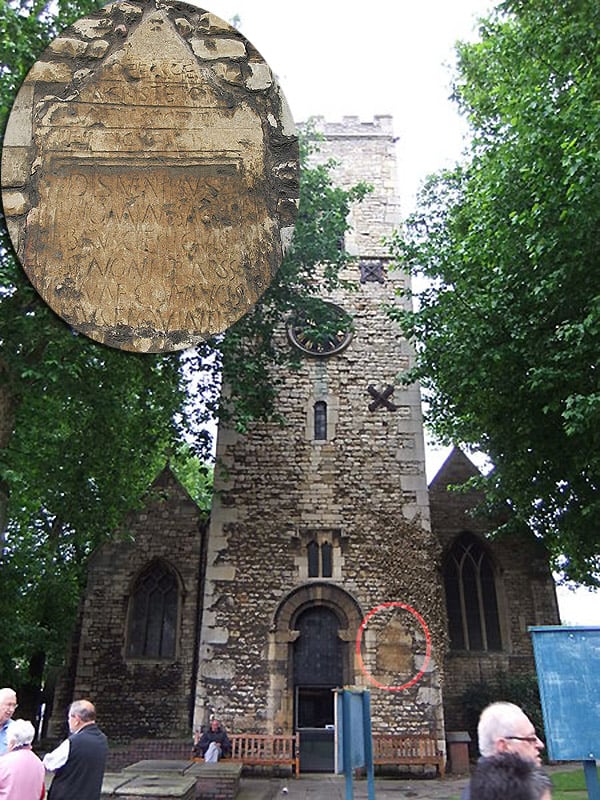With Discover Lincolnshire providing free access to many city attractions last weekend, I wanted to provide insight into a few interesting pieces of Lincoln history which are always free of charge and often overlooked, with one such example being the Roman ‘gravestone’ in St. Mary-le-Wigford church off the High Street.
The church at St. Mary-le-Wigford, dirty from the soot of the railway line and the main roads which it sits upon, has existed for a thousand years. It is as unassuming a church as can be found. Situated next to the High Street level-crossing, few would ever bother to even glance at it as they waited endlessly for a train to pass the barriers. The church, however, is one of surprises and intriguing history.
King Stephen, for example, who had fought and was captured by the forces of the Empress Matilda in 1141 was supposed to have tethered his horse at the church before battle. Others tales claim that Henry II had his son (the future king) John proclaimed his successor at the church, but this is most certainly untrue.
The church was originally believed to have been constructed in the 11th century, by an Englishman, either before or after the Norman Conquest. Close analysis of the structure and the history of the area of which it was built have caused this initial construction date to be questioned.

The tower of the church, which faces onto the High Street is almost certainly of 11th century construction, reusing old Roman stones for its construction. The tower as well as other parts of the church, appear to have re-purposed pieces of an earlier Christian church, dating from the 10th century.
In addition to these finds, it has been noted that the tower and church are not of one construction, but rather, the tower has been butted up to the church at a later date. These discoveries seem to point to an earlier church on the site (probably of English or Scandinavian construction) in the 9th or 10th centuries, later rebuilt to its present appearance.
Perhaps the most unique and interesting part of the church, is not its age or history, but rather a simple stone outside of it. On the west façade of the tower is a memorial stone, placed there with an inscribed dedication by the founder, a man named Eirtrig. The stone, however, is not from an earlier English or Norse grave, but rather one from a Roman.
The memorial stone (sometimes refereed to as a gravestone) belonged to a Roman named Sacer. Nothing is known of Sacer apart from what is inscribed upon his memorial: “In memory of the departed; to the name of Sacer, son of Bruscus, a Senonian citizen, and Carssouna his wife and Quintus his son.” From this we know that Sacer was a Roman citizen and a Gaul, as Senonia relates to the Roman province of Gallia Lugdunensis, centred on modern-day Lyon. Why Sacer had travelled and settled to Lincoln, however, remains a mystery.
What we do know, is that sometime in the 11th century, an Englishman named Eirtrig built a tower at the church and needing a stone for dedicating the building, used the memorial stone of Sacer — perhaps because of its quality of shape and carvings, or possibly because it was the best surface for the task. Regardless of his reasons, Eirtrig re-purposed the stone, having his own message carved into it: “Eirtrig had me built and endowed to the glory of Christ and St. Mary”.
For the majesty of his new tower be fully appreciated, the words carved upon the stone by Eirtrig were placed to be read from bottom to top, to ensure that the viewers’ gaze would go from reading the message to beholding the magnificence of the tower which he had constructed.
Next time you are stuck at the barriers waiting for the train to pass, have a glance at the tower built by Eirtrig and the curious Roman memorial he reused to dedicate it to St. Mary and Christ. It may not be as exciting or awe-inspiring as the Cathedral or Castle, but it is an interesting and tangible piece of our city’s Roman and pre-conquest history.







